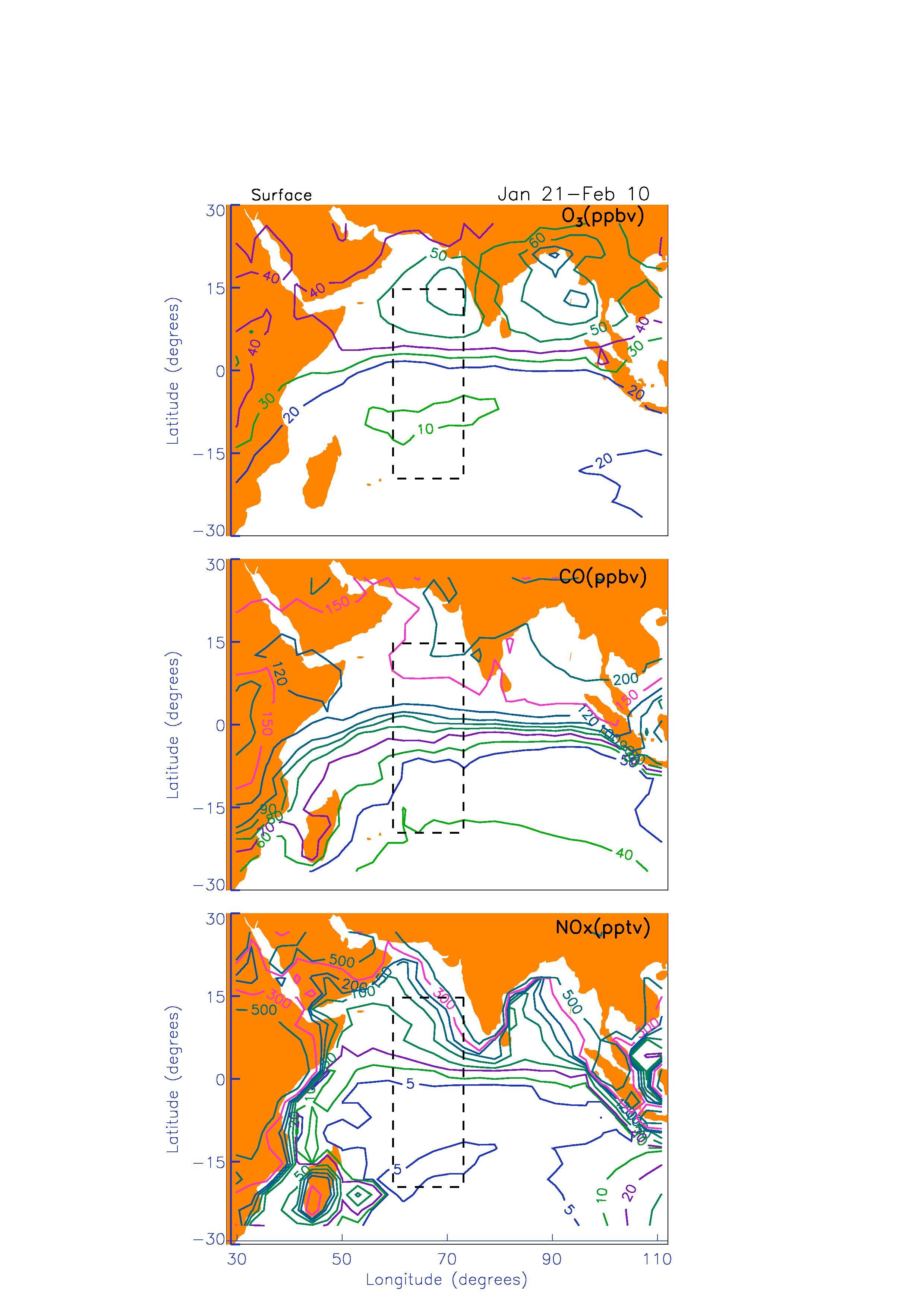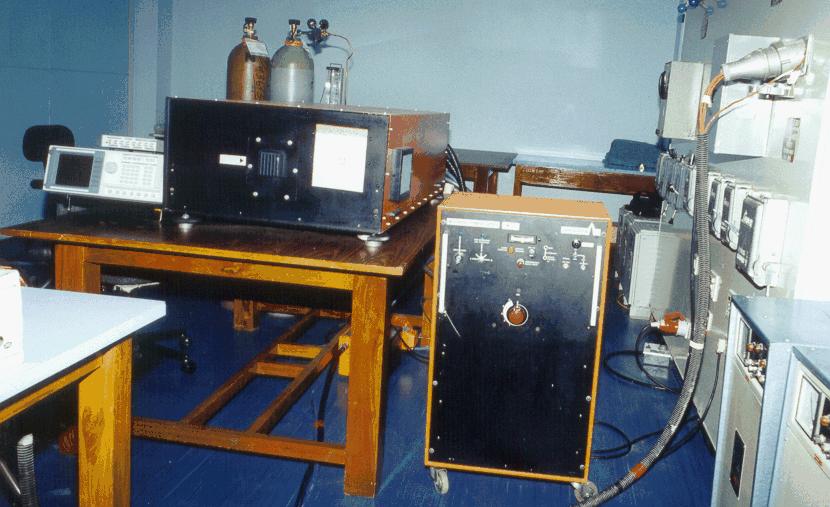
Distribution of Ozone and its Precursors over Indian Ocean
The geographical distribution of surface ozone, CO and NOx covering the Indian Ocean and a part of the Indian sub-continent during the period of January-February is shown here as simulated using a three-dimensional chemical-transport model. These plots clearly show the low O3 and NOx values over the entire Indian Ocean depicting relatively clean environment. Ozone starts to increase north of the equator as we move closer to the Indian continent. The high CO values are obtained due to agricultural burning and bio-fuel use for this region during the months of January to March where pollutants are expected to be transported from South and South-east Asia towards the Indian Ocean. It has been shown that the effect of the transport of pollutants from the Indian subcontinent to the Indian Ocean is greater than from the South East Asian region or from the African continent. As the tropics is a region of convective activity, the pollutants get transported to the open marine region and consequentlt affect the ozone budget their by the usual photochemical production of ozone.
